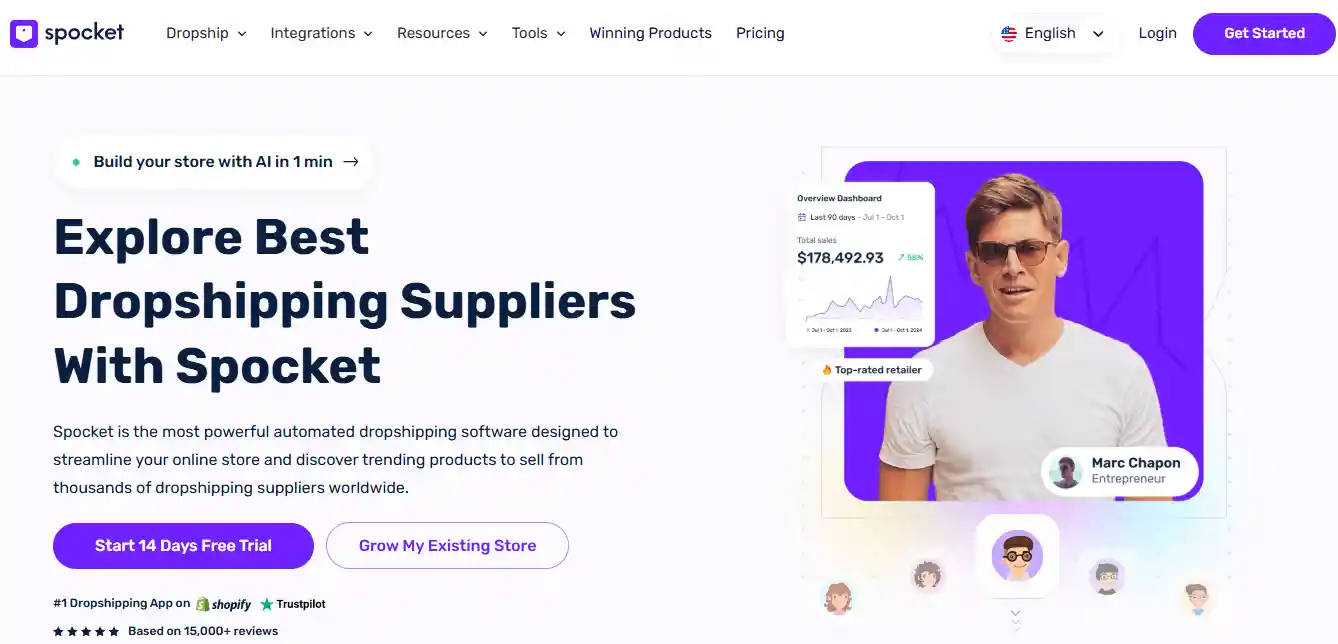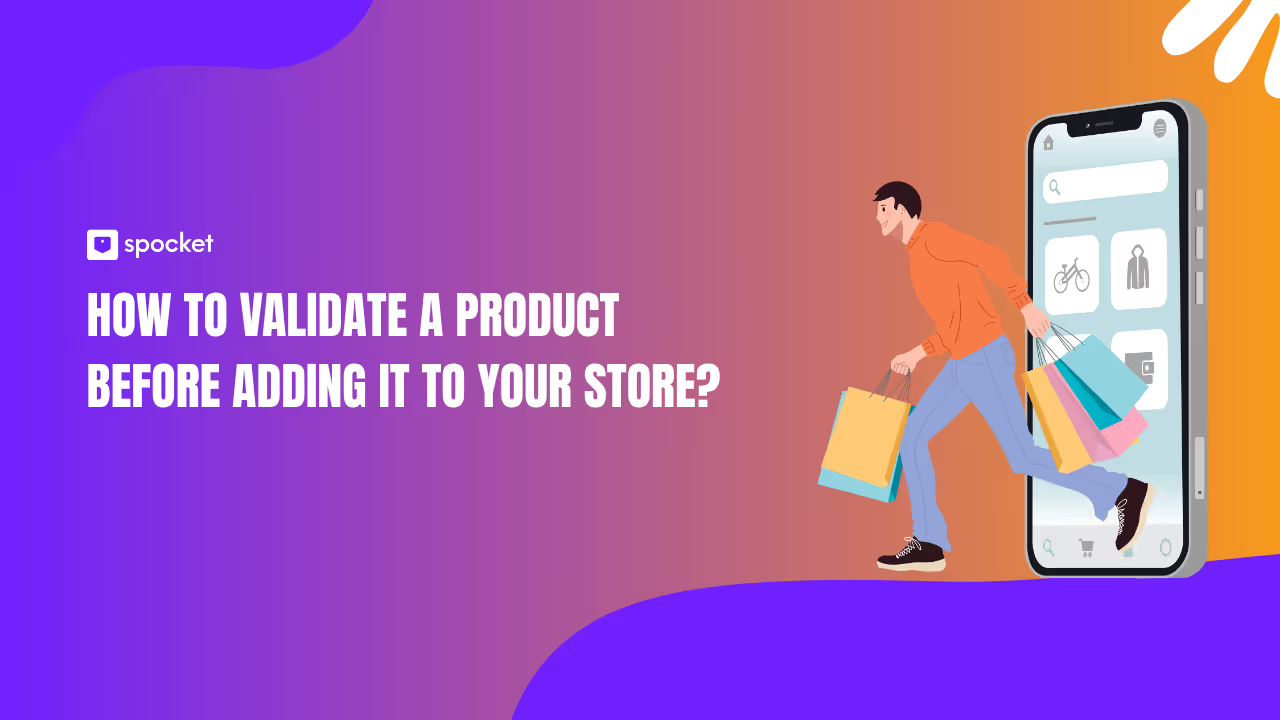POV: You are trying to find out whether your product is the right fit for the market. If that sounds like a situation you are currently stuck in, then our blog is the perfect starting point for you.
Today, we are going to cover proven strategies that actually work for product validation. You will learn how to master this process and discover data-driven insights to ensure that you get the right product market fits. So, before you invest months into development and get everything perfect, start working on this. You are going to save a lot of time and money in the process. Let's begin.
What Is Product Validation?
Product validation helps you confirm whether people actually want what you're planning to sell. Rather than hoping for the best, you're gathering concrete evidence about market demand, customer interest, and profit potential.
It has some similarities to product testing. At its core, validation answers three critical questions: Does your product solve a real problem? Will people pay for your solution? Can you reach enough customers to make it profitable? Think of validation as your early warning system. It helps you spot red flags before they become expensive problems and identifies green lights that signal genuine opportunity.
The validation process combines quantitative data with qualitative insights. You'll examine search volumes, analyze competitor performance, study customer reviews, and sometimes even talk directly to potential buyers. The goal isn't to prove your product idea is perfect—it's to gather enough evidence to make a smart business decision.
The Product Validation Process
Here is the product validation process in a nutshell:
- Define the problem and audience: Write down what problem your product solves and who will use it. A clear statement helps avoid scope creep. Take a wireless charger: it solves the problem of messy cables for smartphone owners who care about convenience.
- Research customers: Learn about your audience’s needs, habits and budget. Interviews, short surveys and reviews help you understand what buyers value and what disappoints them. You can gather insights by reading comments on competitor listings or hosting a social media poll.
- Analyze the market: Look at competing products and demand. We suggest running market analysis to see if your idea fits with existing trends. A quick search on marketplaces will show if similar items are available and at what price points.
- Create a prototype or mock‑up: A simple model or digital sketch is enough. Product validation guides recommend testing prototypes with real users to see whether they meet needs. If you’re working with a physical product, you might order a sample from a supplier and check its quality.
- Test and measure: Share your idea with a small group and look at metrics such as pre‑orders, sign‑ups or purchase rates. Iterate based on feedback until results improve.
These steps may take days or weeks, but they build confidence and save you from costly errors later. Keep your records simple: a spreadsheet with feedback notes, test dates and key metrics will do. Over time, you’ll develop an instinct for recognising early signals of success or failure.
Different Stages of Product-Market Fit
Product-market fit develops gradually rather than happening overnight. Understanding these stages helps you recognize where you are in the process and what to focus on next. Here are the different stages:
Problem-Solution Fit
The initial stage involves problem-solution fit. Here, you've identified a clear problem and confirmed your product addresses it meaningfully. Customers express interest when they hear about your product and can see how it would help them. But interest doesn't equal sales yet.
Development Stage
The developing stage represents early product-market fit. Customers not only show interest but actually purchase and use your product. You're seeing positive feedback, some customer retention, and maybe even a few organic recommendations. Sales are happening, but growth requires active marketing effort.
Strong product-market fit occurs when customers become advocates. They recommend your product to others without being asked, make repeat purchases, and you start seeing consistent growth without excessive marketing spend. Word-of-mouth marketing begins driving meaningful traffic and sales.
Market Leadership Phase
Market leadership represents the ultimate stage where your product dominates its niche. You have significant market share, strong customer loyalty, and sustainable competitive advantages that protect your position.
Most dropshipping products never reach the final stage, but achieving strong product-market fit creates a stable, profitable business that can fund expansion into additional products or markets.
Good Product Validation vs. Bad Product Validation
Good validation practices use multiple data sources for confirmation rather than relying on any single metric. If Google Trends shows growing interest, competitor analysis reveals healthy demand, and customer surveys indicate purchase intent, you have convergent evidence supporting your product choice.
Bad validation relies on assumptions, personal preferences, or isolated data points. If you only check that "people post about this on Instagram" or "my friends think it's cool," you're missing critical pieces of the puzzle. Good validation actively seeks to disprove your assumptions as much as prove them.
Good validation tests with real potential customers and measures actual behavior rather than stated intentions. People often say they'll buy something in surveys but behave differently when it's time to actually spend money. Bad validation asks leading questions or only talks to people who are likely to give positive feedback.
What Else to Consider?
Good validation considers long-term sustainability, seasonal variations, and competitive responses. Bad validation focuses only on best-case scenarios and ignores potential challenges. If your validation process only confirms what you want to hear, you're probably doing it wrong.
Time investment separates good from bad validation too. Good validation takes enough time to gather meaningful data—usually 1-2 weeks minimum. Bad validation rushes to conclusions based on a few hours of research or first impressions.
Finding the Right Market and Audience for Your Product
Market and audience identification requires deeper analysis than many dropshippers realize. You're not just looking for "people who might buy this"—you need to understand who will actually spend money, how they make purchase decisions, and where you can reach them cost-effectively.
Start with demographic research
Go beyond basic age and gender information. Income level matters more than age for many products. Location affects shipping costs and delivery times. But psychographics often matter more than demographics. People's values, interests, lifestyle choices, and aspirations drive many purchase decisions.
Study how your target customers currently solve the problem your product addresses. If they're not solving it at all, you might have found an untapped market—or evidence that people don't care enough to pay for solutions. If they're using expensive or inconvenient alternatives, that suggests opportunity for a better solution.
Map Pain Points and Behavior Analysis
Pain point mapping creates a detailed understanding of customer frustrations with existing options. The bigger the pain point, the more motivated customers will be to try alternatives. Pain points also guide your marketing messages and product positioning.
Behavior analysis reveals where customers spend time and get product information. Do they research extensively before buying or make quick impulse decisions? Do they read reviews, watch videos, or prefer recommendations from friends? Are they active on social media or do they stick to Google searches? Understanding these patterns helps you plan your marketing approach.
Purchase patterns within your target market provide crucial insights. How much do customers typically spend on similar products? How often do they buy? What time of year do they purchase most? Do they buy complementary products together? These patterns affect everything from pricing to inventory management.
Check Channel Preferences and Cultural Factors
Channel preferences determine where you can reach customers most cost-effectively. Some audiences respond well to social media advertising while others prefer Google search ads. Some trust influencer recommendations while others want to see detailed product specs and reviews. Matching your marketing channels to audience preferences dramatically improves your return on ad spend.
Cultural factors and social influences shape buying behavior too. Some products succeed because they signal status or group membership. Others work because they solve practical problems efficiently. Understanding the social and cultural context around your product helps you craft more compelling marketing messages.
10 Proven Product Validation Strategies that Work in 2025
Here are ten proven product validation strategies that actually work in 2025:
Google Trends Analysis
Google Trends analysis provides insights into search interest over time. Look for steady or growing trends rather than sudden spikes that might indicate fads. Products with consistent interest for 12+ months typically have more staying power than viral trends that flame out quickly.
Keyword Demand Research
Keyword demand research through tools like Ahrefs or SEMrush shows actual search volumes for product-related terms. High search volume with manageable competition often signals good opportunities. But don’t just look at the main product keyword—analyze related terms that indicate purchase intent.
Social Media Trend Monitoring
Social media trend monitoring across platforms like TikTok, Instagram, and Pinterest reveals emerging interests. Viral products often translate to sales opportunities, but timing matters. You want to catch trends early enough to capitalize but late enough that demand is proven.
Best Seller Analysis
Best seller analysis provides direct insight into purchase behavior. Study best-seller lists in your category, read customer reviews for insights about what people love and hate, and look at pricing patterns. Products consistently ranking well indicate sustained demand.
Order Volume Checking
Order volume checking shows what’s actually selling in the dropshipping space. Products with thousands of orders and positive ratings indicate proven demand. But also check how many suppliers offer the same product—too many might mean oversaturation.
Landing Page Testing
Landing page testing lets you measure actual interest before committing to inventory. Create a simple product page and run small Facebook or Google ads. Measure click-through rates, time on page, and email signups to gauge genuine interest levels.
Pre-Order Campaigns
Pre-order campaigns test purchase intent directly. Set up a “coming soon” page with pre-order options and see how many people are willing to pay upfront. This method provides the strongest validation signal because it measures actual buying behavior rather than just interest.
Influencer Feedback
Influencer feedback from micro-influencers in your niche can provide valuable market insights. Their audience engagement and reactions can indicate broader market interest. Plus, influencers often have good instincts about what their followers will actually buy.
Do Surveys
Survey apps can help you gather direct customer insights about problems and solution preferences. Focus on understanding current behavior rather than hypothetical future actions. Ask what people currently spend money on and what frustrates them about existing solutions.
How to Validate Product Before Adding it to Your Store
Here is how to validate products before adding them to your store:
Verify Demand and Supply
Market demand verification combines quantitative and qualitative research. Check Google Trends for search interest patterns, analyze keyword search volumes using SEO tools, study social media engagement around similar products, and examine competitor performance indicators like reviews and sales rankings.
Supplier quality assessment protects you from fulfillment problems that can destroy customer relationships. Order samples from potential suppliers to test product quality, packaging, and shipping times. Verify that suppliers can handle your expected order volumes and have good customer service responsiveness.
Do a Margin Analysis and Market Comparison
Profit margin calculation must account for all costs, not just product prices. Include shipping costs, platform fees, payment processing fees, advertising costs, and your time investment. Many products look profitable until you factor in the true cost of customer acquisition.
Competition analysis helps you understand market dynamics and identify positioning opportunities. Study competitor pricing, read their customer reviews for insights about satisfaction and complaints, analyze their marketing approaches, and look for gaps in the market that you could fill.
Review Your Risks
Risk assessment evaluates potential challenges before they become problems. Consider seasonal demand patterns, shipping complications, return rates in the category, regulatory requirements, and potential supplier issues. Products with lower risk profiles generally offer better long-term success chances.
Types of Products You Should Validate (and Not)
Certain product types require thorough validation while others may need less extensive research. Understanding these categories helps you allocate your validation time and effort efficiently.
Always validate new or trending products without established market presence. These products carry higher risk because their demand patterns are unproven. Seasonal items with unclear demand patterns also need careful validation since timing mistakes can be costly.
Now here are some tips:
- High-investment products requiring significant marketing spend deserve extensive validation. If customer acquisition costs are likely to be high, you need strong confidence in conversion rates and customer lifetime value.
- Products in highly competitive markets also require careful validation to ensure you can compete profitably.
- Items with complex shipping requirements, potential return issues, or regulatory concerns need thorough validation.
- You may not need full validation for proven evergreen products with consistent long-term demand. Simple add-on items for existing successful products also carry lower risk since you already understand the customer base.
- Low-cost test products for market entry might not justify extensive validation if the downside risk is minimal. Products identical to your current successful items usually don't need re-validation unless market conditions have changed significantly.
- Never skip validation for high-ticket items over $200. These products require more customer trust and consideration, making market validation crucial. Products requiring customer education or those with potential safety concerns also always need thorough validation.
Best and Required Niches for Product Validation
Certain niches demand more rigorous validation due to their unique characteristics and risk profiles. Health and wellness products require extensive validation because they involve customer trust and potential safety concerns. Customers are more cautious about products they put in or on their bodies.
- Tech accessories and items with rapid innovation cycles need careful validation because product lifecycles can be short. What's popular today might be obsolete in six months. Fashion and beauty products with trend sensitivity require validation to distinguish between lasting trends and short-lived fads.
- Home improvement items often have seasonal demand patterns that affect inventory and cash flow planning. Pet products frequently have specific requirements based on animal size, breed, or health needs, making broad market validation insufficient.
- Emerging niches require particularly thorough validation since historical data may be limited. Sustainable and eco-friendly products represent a growing market, but customer willingness to pay premium prices varies significantly across segments.
- Smart home technology accessories, fitness and wellness equipment, and specialized pet care items all represent categories where customer needs are specific and evolving. Home office and productivity tools gained importance during remote work trends, but demand patterns continue shifting.
When working with platforms like Spocket, you gain access to validated product categories with proven supplier relationships. Their catalog includes trending items across beauty, skincare, technology, and home decor categories, reducing some validation requirements since supplier reliability is pre-verified.
How Spocket Can Help You Validate Your Products?

Spocket provides several features that support the product validation process. Their supplier verification system pre-vets all suppliers, removing much of the supplier risk from your validation process. Over 500,000 entrepreneurs trust their platform, indicating proven reliability in supplier relationships.
The platform provides access to sales data and performance metrics for products in their catalog, giving you insights into what's actually selling rather than requiring you to guess about market demand. This data helps validate product choices with real performance indicators.
Spocket's sample ordering system lets you test product quality firsthand without minimum order quantities. You can validate physical product characteristics, packaging quality, and shipping times before committing to larger orders. This hands-on validation prevents quality surprises after you start selling.
The platform's automated inventory management and tracking tools help with ongoing validation and optimization once you launch products. Integration with popular platforms like Shopify, WooCommerce, eBay, and others makes it easy to test products across different markets and audiences.
Their 14-day free trial allows you to validate their platform and explore product options before making financial commitments. The variety of available products across categories like bath and beauty, pet supplies, toys, and more provides multiple validation opportunities within a single platform.
What's Next?
Building a systematic validation process creates repeatable success rather than relying on luck. Document what works and what doesn't so you can refine your approach over time. Create templates for market research, competitor analysis, and customer surveys to speed up future validation projects.
Start small and scale gradually rather than betting everything on single products. Begin with low-risk tests using small advertising budgets and limited product selections. Once you identify winners through validation, you can increase investment with confidence.
Monitor and adjust your approach as you gather more experience. Product validation isn't a one-time activity—continue monitoring market trends, competitor moves, and customer feedback to stay ahead of changes. Markets evolve, and your validation methods should evolve too.
Create feedback loops that provide ongoing customer insights. Set up systems to continuously gather customer reviews, survey responses, and social media mentions. This ongoing feedback helps you spot new opportunities and potential problems early.
Test multiple products simultaneously rather than focusing on single products. Diversification reduces risk and increases your chances of finding winners. Most successful dropshippers have portfolios of validated products rather than relying on single items.
Conclusion
Product validation transforms dropshipping from guesswork into strategic business building. The methods we've covered aren't theoretical—they're practical tools used by successful dropshippers every day. By testing demand, verifying suppliers, and gathering customer feedback before investing heavily, you dramatically improve your chances of success. Start implementing these validation methods with your next product idea, and build your business on solid foundations rather than hope alone.






































